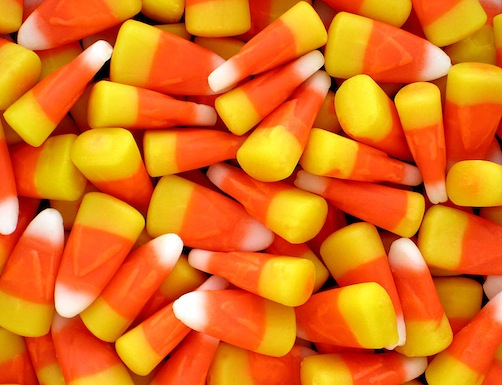by Katherine Matutes
I’m often asked if I let my kids eat their
Halloween loot, and I am usually greeted with raised eyebrows when I say
“yes”. However, I do have some rules.
Safety First: Of course, safety is the most important issue.
We only visit the houses of people we know, and I always inspect every price of
candy before they may eat anything.
Moderate Indulgence: They may only have five
pieces on Halloween night – which is pretty lenient in my house. The rest is
put up out of sight, so they’re not constantly tempted to get another piece. On
the days following Halloween they are permitted to have one piece a day but not
every day.
Shared Decisions: When they ask for a
piece of candy a week or so later, I ask them
to decide if they feel they’ve had a piece of candy for several days in a row.
If they say “yes”, I follow up with the suggestion that perhaps they should
make a healthier choice and have a piece of fruit for a snack instead. They may
still chose the piece of candy, but they often decide to go for fruit, which
usually satisfies their craving for something sweet.
These guidelines are helpful for several
reasons.
- Allowing them to be indulgent on Halloween teaches them that it’s ok to be a little indulgent sometimes. Limiting the number of pieces to 5 on the first day reminds them that indulgences should be kept moderate.
- Storing the candy out of sight helps avoid the temptation to eat a piece just because they see it, again bearing moderation in mind. I don’t forbid them from eating Halloween candy because that kind of restriction typically backfires, leading to hiding or binging behaviors that set the stage for eating disorders. A mom recently told me that she knew she had over done the junk food restriction when her son was found at a party hiding behind a chair with an empty Doritos bag that he had single-handedly devoured.
- Asking them to evaluate if they’ve had a lot of candy recently is empowering them to be involved in the decision making process. I’m not just telling them what the rules are. I’m teaching them how to pay attention to their own behavior and make the right choice, which is something they will have to do when I am not around to guide them.
There also is the possibility that your family won’t distribute all the candy it purchased for trick-or-treaters. Excess candy can add to temptation in your house if it’s left to sit around. This year, you might consider sharing your leftover candy with our brave military personnel overseas through the website www.operationgratitude.com.

More About Katherine Matutes, PhD





